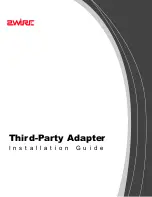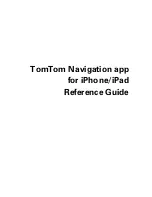
Strings
63
When you reference query columns inside tags, such as
cfoutput
and
cfloop
, in which you
specify the query name in a tag attribute, you do not have to specify the query name.
You can access query columns as if they are one-dimensional arrays. For example, the following
line assigns the contents of the Employee column in the second row of the myQuery query to the
variable myVar:
<cfset myVar = myQuery.Employee[2]>
Note:
You cannot use array notation to refer to a row (of all columns) of a query. For example,
myQuery[2] does not refer to the second row of the myQuery query object.
Working with structures and queries
Because structure variables and query variables are references to objects, the rules in the following
sections apply to both types of data.
Multiple references to an object
When multiple variables refer to a structure or query object, the object continues to exist as long
as at least one reference to the object exists. The following example shows how this works:
<cfscript> depts = structnew();</cfscript>
<cfset newStructure=depts>
<cfset depts.John="Sales">
<cfset depts=0>
<cfoutput>
#newStructure.John#<br>
#depts#
</cfoutput>
This example displays the following output:
Sales
0
After the
<cfset depts=0>
tag executes, the depts variable does not refer to a structure; it is a
simple variable with the value 0. However, the variable newStructure still refers to the original
structure object.
Assigning objects to scopes
You can give a query or structure a different scope by assigning it to a new variable in the other
scope. For example, the following line creates a server variable, Server.SScopeQuery, using the
local myquery variable:
<cfset Server.SScopeQuery = myquery>
To clear the server scope query variable, reassign the query object, as follows:
<cfset Server.SScopeQuery = 0>
This deletes the reference to the object from the server scope, but does not remove any other
references that might exist.
Copying and duplicating objects
You can use the
Duplicate
function to make a true copy of a structure or query object. Changes
to the copy do not affect the original.
Summary of Contents for COLDFUSION MX 61-DEVELOPING COLDFUSION MX
Page 1: ...Developing ColdFusion MX Applications...
Page 22: ...22 Contents...
Page 38: ......
Page 52: ...52 Chapter 2 Elements of CFML...
Page 162: ......
Page 218: ...218 Chapter 10 Writing and Calling User Defined Functions...
Page 250: ...250 Chapter 11 Building and Using ColdFusion Components...
Page 264: ...264 Chapter 12 Building Custom CFXAPI Tags...
Page 266: ......
Page 314: ...314 Chapter 14 Handling Errors...
Page 344: ...344 Chapter 15 Using Persistent Data and Locking...
Page 349: ...About user security 349...
Page 357: ...Security scenarios 357...
Page 370: ...370 Chapter 16 Securing Applications...
Page 388: ...388 Chapter 17 Developing Globalized Applications...
Page 408: ...408 Chapter 18 Debugging and Troubleshooting Applications...
Page 410: ......
Page 426: ...426 Chapter 19 Introduction to Databases and SQL...
Page 476: ...476 Chapter 22 Using Query of Queries...
Page 534: ...534 Chapter 24 Building a Search Interface...
Page 556: ...556 Chapter 25 Using Verity Search Expressions...
Page 558: ......
Page 582: ...582 Chapter 26 Retrieving and Formatting Data...
Page 668: ......
Page 734: ...734 Chapter 32 Using Web Services...
Page 760: ...760 Chapter 33 Integrating J2EE and Java Elements in CFML Applications...
Page 786: ...786 Chapter 34 Integrating COM and CORBA Objects in CFML Applications...
Page 788: ......
















































